Ensuring the safety and performance of your vehicle involves a keen awareness of various factors, and the condition of your tires is paramount in this regard. Dry rot, a common issue in aging tires, can compromise both safety and functionality. Recognizing the signs of dry rot is essential to prevent potential hazards on the road. In this guide, we’ll delve into how to tell if your tires are dry rotted.
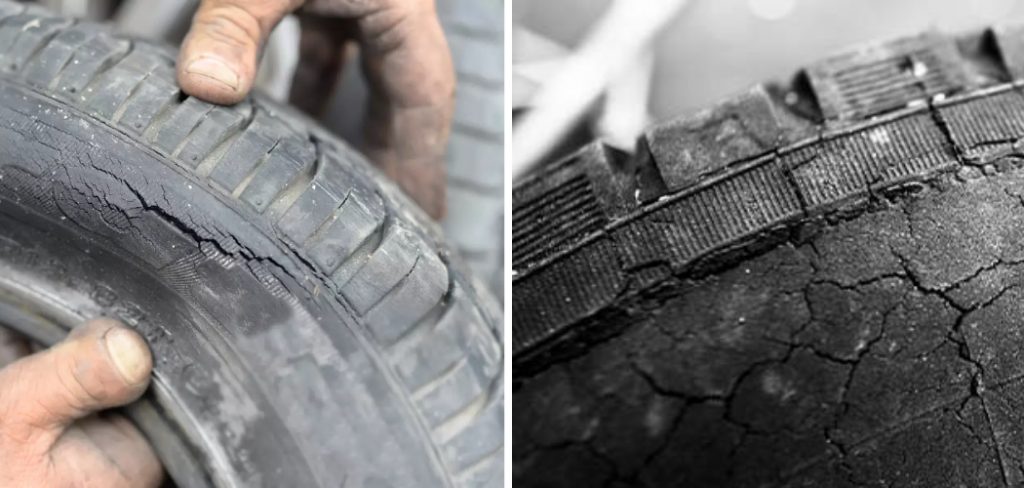
From examining visible cracks on the sidewalls to assessing the overall tire texture, we’ll provide valuable insights for both novice and experienced drivers. Join us on this exploration as we shed light on the nuances of identifying dry rot, empowering you with the knowledge needed to prioritize tire health and ensure a secure and reliable driving experience.
Importance of Identifying Dry Rot for Vehicle Safety
Identifying dry rot early is critical for vehicle safety. Dry rot can lead to tire failure, which can cause accidents at high speeds or during challenging road conditions. The rubber in tires that are dry rotted will have lost its flexibility and strength, increasing the chance of blowouts or flats.
It also compromises your vehicle’s handling capacity, making it harder to control, especially in wet or icy conditions. Effective and early detection of dry rot in your tires means ensuring your safety, the safety of your passengers, and everyone else on the road.
Understanding Dry Rot
Dry rot, also known as tire decay, is a condition that typically manifests in tires due to age, lack of use, or exposure to harmful environmental factors. It occurs when the oils in the rubber compounds start to evaporate, leaving the tire dry and brittle. Over time, this leads to a breakdown of the tire structure, causing visible cracks, discoloration, and a rough texture.
While all tires eventually succumb to dry rot, certain factors can accelerate the process. These include prolonged exposure to UV rays, extreme temperatures, and chemicals, as well as under inflation of the tires. Understanding dry rot is integral to its early identification and preventative maintenance, ultimately ensuring a safer and smoother ride.
10 Methods How to Tell if Your Tires Are Dry Rotted
1. Check the Tread Depth
One of the easiest ways to tell if your tires are dry rotted is by checking the tread depth. Dry rot can cause cracks and fissures in the rubber, which can lead to a decrease in tread depth. Use a penny or a tread depth gauge to measure the depth of your tire treads.
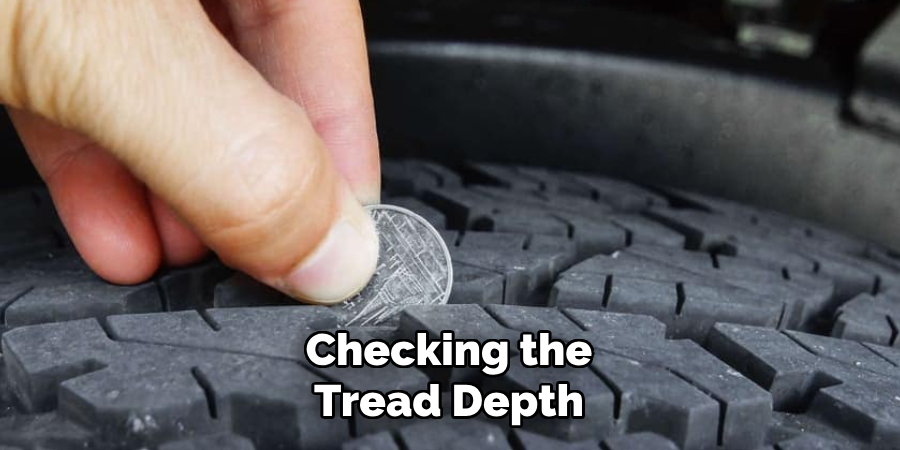
2. Look for Visible Cracks
Another obvious sign of dry rot is visible cracks on the surface of the tire. These cracks may appear as shallow fissures or deep grooves and can be found on both the sidewall and tread of the tire.
3. Check for Bulges or Blisters
Bulges or blisters on the sidewall of your tires can also indicate dry rot. These protrusions are caused by air pockets forming between layers of rubber due to dry rot, and they can weaken the structural integrity of the tire.
4. Inspect for Discoloration
Discoloration, particularly a grayish hue, is another sign that your tires may be dry rotted. This discoloration is caused by oxidation, which occurs when oxygen reacts with rubber over time.
5. Test for Hardness
Dry rotted tires may also feel harder than normal when you press your finger into them. This is because the rubber has become stiff and less pliable due to prolonged exposure to heat and UV rays.
6. Smell for an Unusual Odor
If you notice a strong chemical smell coming from your tires, it could be a sign of dry rot. This odor is caused by chemicals in the rubber breaking down due to age and exposure to environmental factors.
7. Listen for Strange Noises
Dry rotted tires may also make unusual noises while driving, such as thumping or rumbling sounds. This could be due to uneven wear caused by cracks in the rubber.
8. Check for Uneven Wear Patterns
Speaking of uneven wear, this is another indication that your tires may be dry rotted. If you notice that one side of the tire is wearing faster than the other, it could be a sign of dry rot.
9. Look for Exposed Cords
In severe cases of dry rot, you may be able to see exposed cords or wires in the rubber of your tire. This is a serious safety concern and indicates that your tires should be replaced immediately.
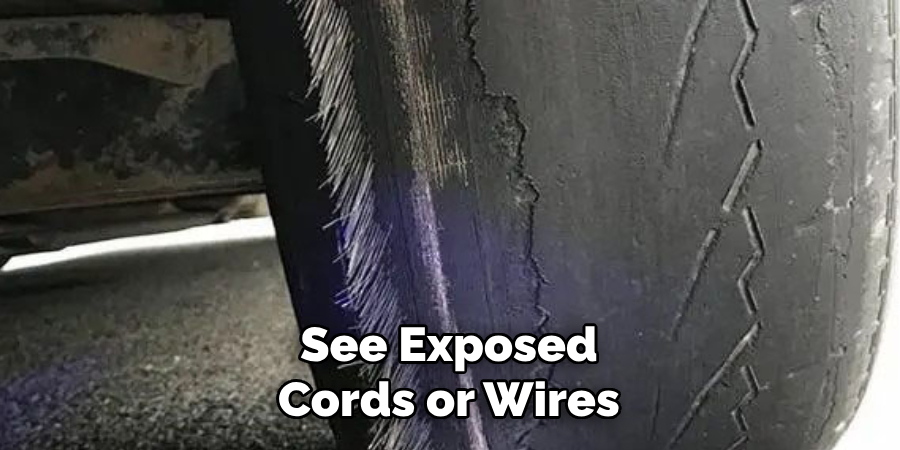
10. Get a Professional Inspection
If you’re unsure about the condition of your tires, it’s always best to get a professional inspection from a mechanic or tire specialist. They can check for signs of dry rot and advise you on whether or not your tires need to be replaced.
Feeling for Texture Changes
In addition to visual signs, a change in the texture of your tires can be a strong indicator of dry rot. As dry rot progresses, the rubber of your tires can become rough or grainy to the touch. This is due to the rubber drying out and losing its natural elasticity and suppleness. Run your hand along the surface of the tire, paying attention to any abnormally rough or brittle areas.
Be sure to check both the tread and the sidewalls, as dry rot can affect all parts of the tire. If the tire’s texture feels abnormal, it’s a good idea to have the tire inspected by a professional. This tactile approach adds an extra layer of detection for dry rot, assisting you in maintaining optimal tire health and safety.
Checking the Age of the Tires
The age of your tires can also be a crucial factor in determining the likelihood of dry rot. Typically, tires that are over six years old are more prone to dry rot due to the natural decay of the rubber compounds over time. To check the age of your tires, look for the DOT code on the tire’s sidewall. The last four digits of this code represent the week and year the tire was manufactured.
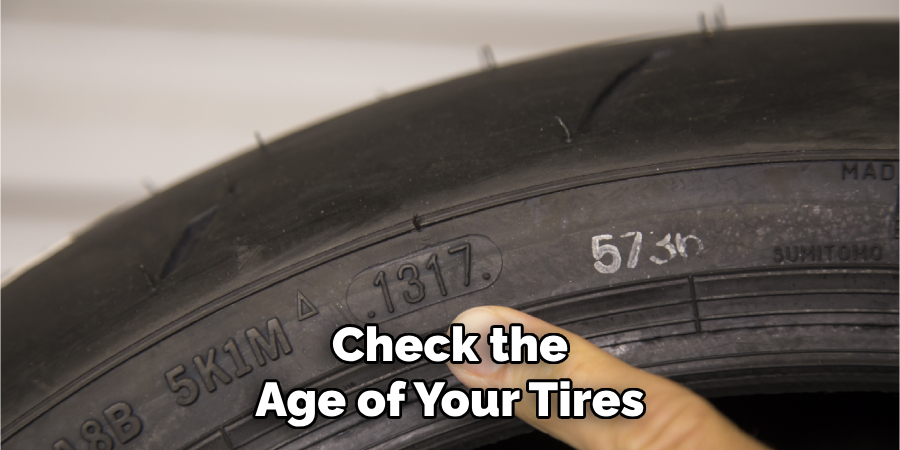
For instance, a code ending in “3520” implies that the tire was made in the 35th week of 2020. If your tires are considerably old, it may be beneficial to have them inspected by a professional, even if they display no immediate signs of dry rot. Remember, tires age regardless of use – even spare tires or tires in storage can succumb to dry rot.
Using the Penny Test
The Penny Test is a simple, yet effective method to assess the tread depth of your tires, giving you a quick indication of whether dry rot might be a problem. To perform the Penny Test, take a penny and place it in one of the tread grooves of your tire. Make sure Lincoln’s head is pointing downwards. If Lincoln’s head is completely visible, this means your tread depth is less than 1/16th of an inch and it’s time to replace your tire.
If part of Lincoln’s head is covered by the tread, you have at least some tread depth left. However, be aware this test only checks tread depth, not the other potential signs of dry rot such as cracks or discoloration. Always combine this with the other methods listed earlier for a comprehensive assessment of whether your tires are affected by dry rot.
Inspecting for Discoloration
Discoloration is another visual clue that could point towards dry rot in your tires. Often, as a result of dry rot, tires may develop a gray or brownish hue distinct from their usual black appearance. This discoloration is caused by the reaction of oxygen with the rubber, leading to oxidation over time.
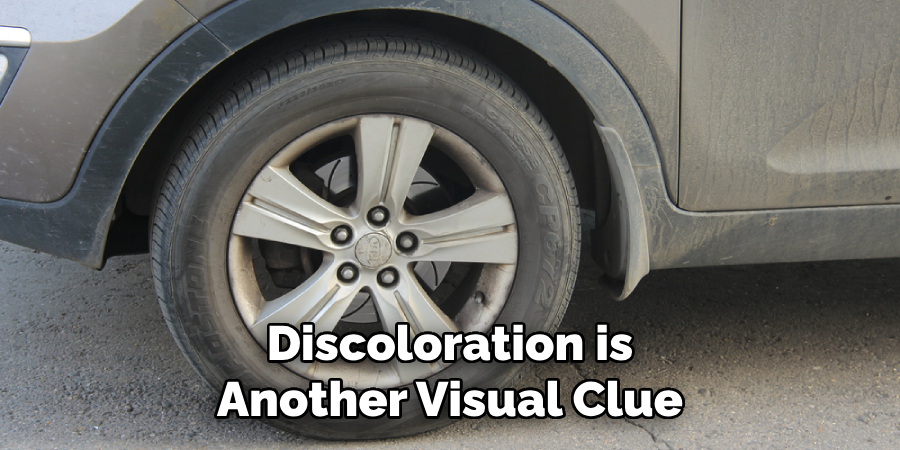
To inspect your tires for discoloration, you will need adequate lighting. Position your tires so that you can clearly see the sidewalls and tread. Look closely for any areas that seem to have changed color, paying particular attention to streaks or spots of gray or brown. Remember, the discoloration might not be uniform across the whole tire, and the severity of discoloration can also vary from tire to tire.
If you notice any discoloration, it’s a good idea to seek professional advice. A tire specialist will be able to tell you if the discoloration is a sign of dry rot or whether it’s a result of other factors such as brake dust or road grime. They can also guide you on the necessary steps to take if dry rot is indeed the issue. This expert analysis will help ensure the longevity and safety of your tires.
Conclusion
In today’s fast-paced world, it is easy to overlook small but crucial things like the condition of your tires. However, as we’ve discussed in this blog post, dry rotted tires can be a serious safety hazard and should not be ignored. By now, you have learned how to tell if your tires are dry rotted – cracks, bulges, and discoloration.
It is also important to regularly check the age of your tires and replace them after six years, even if they appear to be in good shape. Remember that prevention is always better than cure when it comes to your safety on the road. So if you notice any suspicious signs on your tires, make sure to take immediate action.

About
JeepFixes Team is a skilled author for Jeep Fixes, bringing 6 years of expertise in crafting a wide range of jeep fixes. With a strong background in jeep fixes work, JeepFixes Team’s knowledge spans various types of fixtures, from decorative pieces to functional hardware, blending precision with creativity. His passion for jeep fixes and design has made him a trusted resource in the industry.
Professional Focus:
Expert in Jeep Fixes : JeepFixes Team aesthetic specializes in creating durable and innovative jeep fixes, offering both appeal and functionality. His work reflects a deep understanding of jeep fixes techniques and materials.
Sustainability Advocate : He is dedicated to using sustainable practices, ensuring that every fixture is crafted with eco-friendly methods while maintaining high-quality standards.
In his writing for jeep fixes, JeepFixes Team provides valuable insights into the latest trends, techniques, and practical advice for those passionate about jeep fixes, whether they are professionals or DIY enthusiasts. His focus on combining artistry with engineering helps others discover the true potential of jeep in design.
